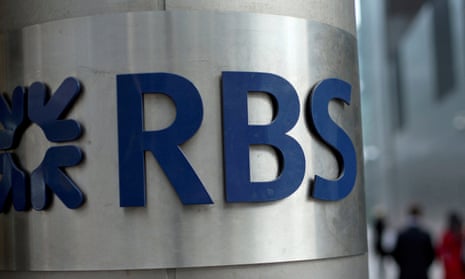Timeline
Royal Bank of Scotland’s problems date back to the £49bn record-breaking takeover of Dutch bank ABN Amro in 2007. In April 2008, RBS tried to boost its finances through a £12bn cash call but this was not enough to prevent it needing a £45bn taxpayer bailout six months later. Since its rescue by the government, RBS has not made a profit and admitted that it will report 10 years of consecutive annual losses.
- October 2007: RBS is part of a consortium that takes over the Dutch bank ABN Amro in the largest deal in financial services history.
- March 2008: Wall Street investment bank Bear Stearns is rescued by rival JP Morgan Chase.
- April 2008: RBS announces £12bn rights issue and puts its insurance businesses, which include Churchill and Direct Line, up for sale.
- August 2008: RBS reports its first loss in 40 years with a half-year loss of £691m.
- September 2008: Lehman Brothers collapses, unleashing a wave of market turmoil.
- October 2008: Government announces bailout for RBS and other banks, including HBOS. Chief executive Fred Goodwin leaves RBS, saying he is “sad” to be going. Stephen Hester is appointed to run the bank.
- February 2009: Goodwin gives MPs on the Treasury select committee a “profound and unqualified apology for all the distress caused” by the bank’s collapse.
- April 2009: Goodwin is described as a “benefit scrounger” and a “cataclysmic failure” at the bank’s annual meeting where 90% of investors fail to back the remuneration report in protest at his £703,000 a year pension.
- June 2009: Goodwin agrees to give up more than £200,000 a year of his pension in an attempt to appease public anger about what is seen as a reward for failure.
- December 2011: Official report into collapse of RBS concludes “multiple poor decisions” were at the heart of its problems but no action is taken against Goodwin.
- January 2012: Goodwin is stripped of his knighthood.
- June 2012: Huge IT failure leaves customers unable to access their accounts for days. Bank is later fined £50m for the problem.
- February 2013: RBS is fined a £390m for “widespread misconduct” in rigging Libor.
- June 2013: Hester is ousted as chief executive.
- August 2013: Ross McEwan is promoted from running the retail bank to replace Hester. He formally starts in October.
- February 2014: McEwan turns the bank’s focus away from investment banking to focus on the high street in UK and Ireland.
- November 2014: RBS among banks fined for rigging foreign exchange markets.
- August 2015: George Osborne sanctions sale of 5% stake in RBS despite a £1bn loss for the exchequer. Taxpayer stake falls to 72%.
- December 2016: RBS announces £800m for settlements with shareholder groups over the £12bn cash call in April 2008.
- February 2017: RBS admits it will not make an annual profit until 2018 – signalling 10 years of annual losses since its bailout. It also abandons plans to sell off the 300 branches which the EU had demanded in return for the government bailout.
- April 2017: Chancellor Philip Hammond declares “we have to live in the real world” and warns RBS shares will be sold at a loss.
- May 2017: A case brought by RBS shareholders over the April cash call in the high court is adjourned while settlement talks over a £520m claim continues. Along with other directors, Goodwin could be forced to defend accusations that investors were misled into buying shares in the Edinburgh-based bank’s rights issue.
